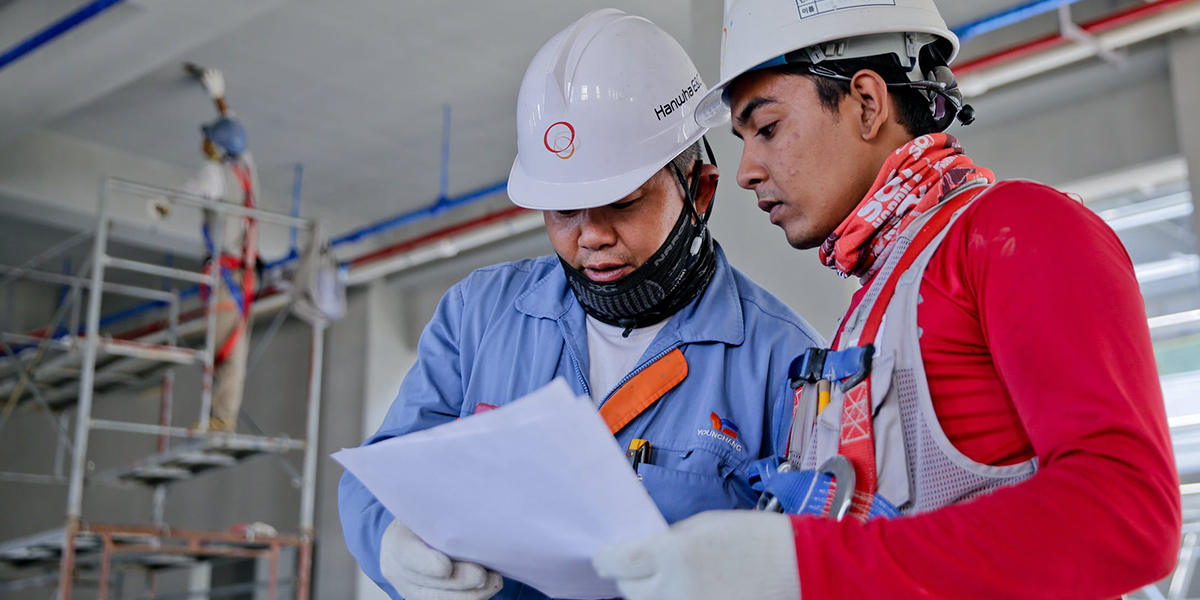
Inclusive and sustainable industrialization, together with innovation and infrastructure, can unleash dynamic and competitive economic forces that generate employment and income. They play a key role in introducing and promoting new technologies, facilitating international trade and enabling the efficient use of resources.
However, the world still has a long way to go to fully tap this potential. Least developed countries, in particular, need to accelerate the development of their manufacturing sector if they are to meet the 2030 target, and scale up investment in scientific research and innovation.
Global manufacturing growth has been steadily declining, even before the outbreak of the COVID-19 pandemic. The pandemic is hitting manufacturing industries hard and causing disruptions in global value chains and the supply of products.
Innovation and technological progress are key to finding lasting solutions to both economic and environmental challenges, such as increased resource and energy-efficiency. Globally, investment in research and development (R&D) as a proportion of GDP increased from 1.5 per cent in 2000 to 1.7 per cent in 2015 and remained almost unchanged in 2017, but was only less than 1 per cent in developing regions.
In terms of communications infrastructure, more than half of the world’s population is now online and almost the entire world population lives in an area covered by a mobile network. It is estimated that in 2019, 96.5 per cent were covered by at least a 2G network.
The coronavirus pandemic has revealed the urgent need for resilient infrastructure. The Asian Development Bank notes that critical infrastructure in the region remains far from adequate in many countries, despite the rapid economic growth and development the region has experienced over the past decade. The Economic and Social Survey of Asia and the Pacific highlights that making infrastructure resilient to disasters and climate change will require an additional investment of $434 billion per year. This sum may need to be even greater in some subregions, such as the Pacific small island developing states.
Aspects of the prevailing global economic environment have not been conducive to rapid progress on Sustainable Development Goal 9. While financing for economic infrastructure has increased in developing countries and impressive progress has been made in mobile connectivity, countries that are lagging behind, such as least developed countries, face serious challenges in doubling the manufacturing industry’s share of GDP by 2030, and investment in scientific research and innovation remains below the global average.
- Efficient transportation services are key drivers of economic development, and more than 80 per cent of world merchandise trade by volume is transported by sea, making maritime transport a critical enabler of trade and globalization. International maritime freight increased by an estimated 3.7 per cent globally in 2017 and projected growth will test the capacity of existing maritime transport infrastructure to support increased freight volumes.
- In 2018, global manufacturing slowed in both developing and developed regions. The slowdown was attributed mainly to emerging trade and tariff barriers that constrained investment and future growth. Despite this slowdown, the global share of GDP in terms of manufacturing value added increased marginally from 15.9 per cent in 2008 to 16.5 per cent in 2015, but stalled at the same level in 2018. The share of manufacturing in least developed countries remained low, posing a serious challenge to the target of doubling the industry’s share of GDP by 2030.
- Meanwhile, the share of manufacturing employment in total employment declined from 15.3 per cent in 2000 to 14.7 per cent in 2015 and to 14.2 per cent in 2018, as countries gradually reallocated production factors from agriculture and low-value added manufacturing towards high-value added manufacturing and services.
- The intensity of global carbon dioxide (CO2) emissions from manufacturing industries declined by more than 20 per cent between 2000 and 2016, to 0.30 kg CO2 per United States dollar, showing a general decoupling of CO2 emissions and GDP growth.
- The proportion of global GDP invested in research and development increased from 1.52 per cent to 1.68 per cent from 2000 to 2016, with Europe and Northern America standing at 2.21 per cent of GDP spent on research and development and most developing regions falling short of the world average in 2016.
- While there has been an increase in the number of researchers per million inhabitants from 804 in 2000 to 1,163 in 2016, that number reached only 91 in sub-Saharan Africa.
- Total official flows for economic infrastructure in developing countries reached $59 billion in 2017, an increase of 32.5 per cent in real terms since 2010. Within this total, the main sectors assisted were transport ($21.6 billion) and banking and financial services ($13.4 billion).
- In 2016, medium-high and high-tech sectors accounted for 44.7 per cent of the global manufacturing value added. Medium-high and high-tech products continued to dominate manufacturing production in Northern America and Europe, reaching 47.4 per cent in 2016 compared with 10.4 per cent in least developed countries.
- Almost all people around the world now live within range of a mobile-cellular network signal, with 90 per cent living within range of a 3G-quality or higher network. This evolution of the mobile network, however, is growing more rapidly than the percentage of the population using the Internet.
